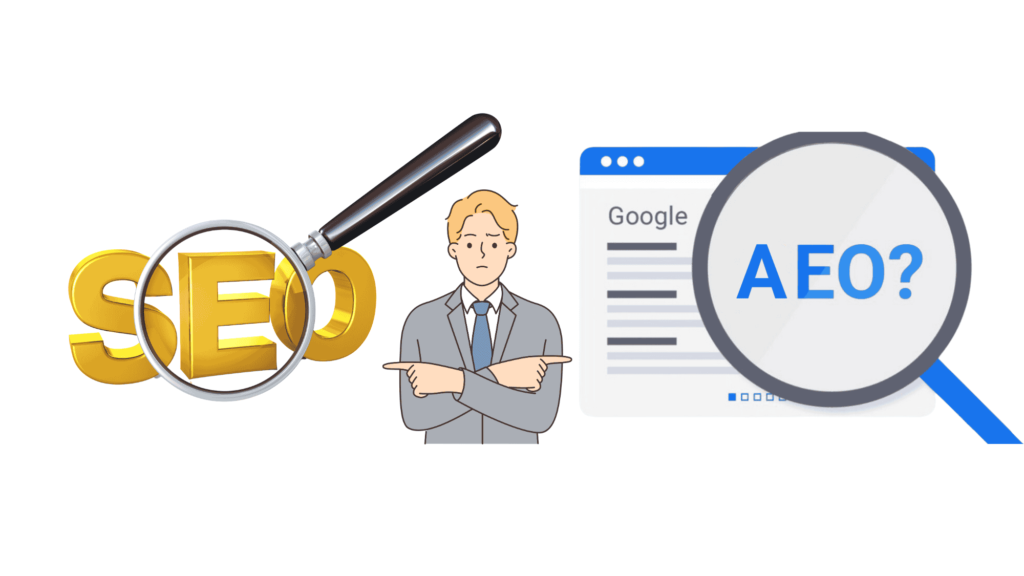
GEO Agency Insights How Location Signals Influence AI Search and Local SEO Rankings
Location signals have become the invisible architects of modern search visibility, determining which businesses appear when customers search for nearby solutions. These geographic markers—from embedded coordinates to regional keywords—feed AI algorithms the precise data needed to match searchers with relevant local businesses.
For companies targeting local customers, understanding location signals means the difference between appearinAppearing in Google’s top search results or remaining invisible to nearby prospects often depends on how well a business leverages the power of a geo marketing agency. For instance, a café in Manchester competing for “best coffee near me” searches needs more than quality products — it requires strategic geographic optimization that AI systems can interpret and prioritise.
The landscape of local SEO rankings has evolved beyond simple proximity-based results. AI-powered search now evaluates multiple location-related factors simultaneously:
- Geo-tagged content and media that establish physical presence
- Consistent business information across digital platforms
- Location-specific keywords embedded naturally in content
- Geographic engagement signals from social media activity
- Review sentiment and authority tied to specific locations
This shift demands businesses collaborate with a GEO marketing agency or adopt sophisticated strategies that blend traditional local SEO practices with emerging AI-focused optimisation techniques.
What Role Do Location Signals Play in AI Search and Local SEO?
Location signals provide critical data to AI algorithms for relevance. These digital markers—ranging from IP addresses and GPS coordinates to business listings and geo-tagged content—feed machine learning systems with precise geographic context. AI search influence depends heavily on this data to match user intent with nearby businesses.
Search engines process location signals through multiple layers. When someone searches “coffee shop near me,” algorithms instantly analyse the searcher’s physical location, cross-reference it with business proximity data, and evaluate relevance signals like reviews and content quality. This complex calculation happens in milliseconds, determining which businesses appear in results.
The local SEO importance of these signals has intensified as mobile searches dominate. Google reports that 76% of people who search for something nearby visit a business within 24 hours. AI systems now prioritise:
- Proximity data from verified business listings
- Behavioural signals such as click-through rates from specific locations
- Contextual relevance matching search intent with geographic markers
- Engagement metrics from location-tagged social interactions, which can be significantly improved by following some tips to increase Instagram engagement
Businesses without strong location signals become invisible to AI-powered search. A restaurant lacking proper geo-tagging might rank below competitors even when physically closer to searchers. This shift makes location signals non-negotiable for any business serving local customers, as AI algorithms increasingly weight geographic precision alongside traditional ranking factors.
How Does Geo-tagging Enhance Local SEO Rankings?
Geo-tagging embeds geographical metadata directly into digital content, creating precise location identifiers that search engines use to match businesses with nearby searchers. This technique transforms ordinary content into location-aware assets that AI algorithms can process and rank for specific geographic queries.
Understanding Geographical Metadata
Geographical metadata acts as a digital fingerprint for your content, telling search engines exactly where your business operates or where specific content originates. When you geo-tag an image of your restaurant’s signature dish, you’re not just sharing a photo—you’re creating a searchable connection between that content and your physical location. Search engines index this information, making your content discoverable when users search for “restaurants near me” or similar location-based queries.
The Impact on Local Search Rankings
The impact on local search rankings becomes measurable through increased visibility in map packs and location-specific results. Businesses that consistently geo-tag their content see improved performance in:
- Google Maps listings appearing for relevant local searches
- Image search results filtered by location
- Social media discovery through location-based feeds
- Voice search queries with geographic intent
Practical Implementation of Geo-tagging
Practical implementation includes embedding GPS coordinates (latitude and longitude) in EXIF data for photos uploaded to your website, tagging Instagram posts with your business location, and adding location schema markup to web pages. A bakery in Manchester posting geo-tagged photos of fresh pastries creates multiple entry points for local customers searching for nearby breakfast options.
Why Are Geo-specific Keywords Essential for Local Search Optimisation?
Geo-specific keywords directly connect user search intent with business locations by incorporating city names, neighbourhoods, regions, and local landmarks into content. When someone searches “coffee shop Camden” or “plumber near King’s Cross,” AI algorithms scan for these precise geographic identifiers to deliver relevant results. Without these location-specific terms, businesses miss critical opportunities to appear in searches from nearby customers actively seeking their services.
The match between search queries and business locations strengthens dramatically when content includes natural variations of geographic terms. AI systems recognise patterns like “Manchester city centre,” “Greater Manchester,” or “Northern Quarter” as related signals pointing to the same geographic area. This semantic understanding allows algorithms to surface businesses even when exact phrasing differs between the query and website content.
Effective keyword optimisation requires strategic selection and placement:
- Research actual search terms locals use rather than official place names
- Include geographic modifiers in page titles, headers, and meta descriptions
- Embed location terms naturally within service descriptions and blog content
- Target long-tail variations like “emergency dentist Shoreditch weekend”
- Create dedicated location pages for multi-site businesses
Search engines reward businesses that demonstrate genuine local relevance through consistent, authentic use of geo-specific keywords throughout their digital presence. The key lies in balancing optimisation with readability—stuffing location names awkwardly signals manipulation rather than legitimate local authority.
How Important Is Consistent NAP Data Across Platforms?
NAP consistency serves as a fundamental trust signal that search engines use to verify your business’s legitimacy and accuracy. When your Name, Address, and Phone number match exactly across Google Business Profile, online directories, social media platforms, and your website, AI algorithms gain confidence in displaying your business to local searchers.
Inconsistent NAP information creates significant problems for both rankings and customer experience. Search engines struggle to determine which version of your details is correct, potentially splitting your citation authority across multiple listings. A customer finding different phone numbers on Google versus Yelp may question your credibility or fail to reach you entirely, leading to lost business opportunities.
Local listings accuracy directly impacts your visibility in AI-powered search results. Even minor variations—such as “Street” versus “St.” or including a suite number in some listings but not others—can confuse algorithms designed to match and verify business information.
Tools for Maintaining NAP Consistency
Businesses maintain uniform NAP consistency through specialized tools:
- Google Business Profile Manager for multi-location oversight
- Moz Local and BrightLocal for citation management
- Yext for automated listing synchronization across hundreds of directories
- SEMrush Local for monitoring NAP discrepancies
The Importance of Regular Audits
Regular audits of your business listings help identify and correct inconsistencies before they damage your local search performance. Manual verification combined with automated monitoring ensures your NAP data remains accurate as directories update their databases.

What Impact Do Geo-tagged Social Media Posts Have on Local SEO?
Geo-tagged social media posts directly enhance local SEO performance by signalling to search engines that your business actively engages with a specific geographic community. When users interact with location-tagged content through likes, shares, and comments, these engagement signals create measurable proof of local relevance that AI algorithms consider in ranking decisions.
How Geo-Tagged Posts Affect Local SEO
Social platforms like Instagram, Facebook, and TikTok automatically associate geo-tagged content with location-based queries, increasing discoverability among nearby users. A restaurant posting geo-tagged photos of daily specials, for instance, appears in location-specific feeds and hashtag searches, driving both social engagement and website traffic. These local SEO boost effects multiply when users check in at your location or share their own tagged content, creating authentic third-party validation.
The Role of AI in Local SEO Rankings
AI-driven ranking algorithms increasingly analyse social signals to assess business prominence within local markets. High engagement rates on geo-tagged posts indicate strong community connections, which search engines interpret as trustworthiness and relevance. Visit https://www.industry.gov.au/publications/list-critical-technologies-national-interest/ai-technologies to get more about AI technologies.
Practical Implementation Strategies
Here are some practical strategies you can implement to leverage geo-tagged social media posts for improving your local SEO:
- Tag every post with precise business location rather than just city names
- Encourage customers to tag your location in their user-generated content
- Create location-specific hashtags combining your brand with geographic identifiers
- Post during peak local activity hours to maximize immediate engagement
- Monitor which geo-tagged content types generate strongest response rates
Note: Businesses that consistently geo-tag social content typically see 79% higher engagement rates compared to untagged posts, directly influencing their visibility in local search results.
How Are AI Features Like Google’s AI Overviews Changing Local Search Rankings?
Google AI Overviews fundamentally transforms local search by evaluating content authority and expertise rather than relying solely on geographic proximity. This AI-driven ranking factor means businesses closest to a searcher no longer automatically dominate results—instead, those demonstrating comprehensive knowledge and trustworthy information gain visibility.
The shift from distance-based rankings to relevance-centred evaluation requires businesses to establish themselves as authoritative sources within their industry. A dental practice 10 miles away with detailed educational content about specific procedures may outrank a competitor two blocks from the searcher if the AI determines superior content quality. This represents a significant departure from traditional local SEO assumptions.
Informational queries receive priority treatment in AI Overviews, particularly exploratory searches where users seek understanding rather than immediate transactions. Queries like “how to choose a local accountant” or “what services do estate agents provide” trigger AI-generated summaries drawing from authoritative local sources. Branded searches and direct purchase-intent queries remain less influenced by these AI features.
GEO Agency Insights How Location Signals Influence AI Search and Local SEO Rankings reveals that businesses must now balance location optimization with content depth. Creating detailed guides, answering common customer questions thoroughly, and demonstrating industry expertise through well-researched articles positions businesses favourably within Google’s AI Overviews framework whilst maintaining strong local relevance signals.
Why Must Multi-location Businesses Manage Geo-specific Content Carefully?
Multi-location SEO demands precise information management because search engines treat each location as a distinct entity requiring unique optimisation. Businesses operating across multiple sites face the challenge of maintaining accurate, location-specific data whilst avoiding duplicate content penalties that can damage rankings.
Each location needs tailored content that reflects its unique characteristics—local landmarks, community events, regional service variations, and area-specific customer needs. Generic content duplicated across locations signals low quality to AI algorithms, reducing visibility in local search results. A restaurant chain, for example, should highlight each branch’s unique menu items, local suppliers, or neighbourhood-specific promotions rather than copying identical descriptions.
Geo-specific content management becomes exponentially complex as locations multiply. Manual updates risk inconsistencies in:
- Business hours across different time zones
- Service offerings varying by region
- Staff information and contact details
- Location-specific promotions and pricing
Google Business Profile Manager and similar automation platforms solve these challenges by enabling centralised control over multiple listings. These tools synchronise NAP data, schedule location-specific posts, and monitor performance metrics across all sites simultaneously. AI-driven platforms can generate localized content variations whilst maintaining brand consistency, ensuring each location maintains its distinct search presence without overwhelming marketing teams with manual updates.
See Also : AEO Strategy Agency: How to Build Answer-Focused Content That Outperforms Competitors
How Do Customer Reviews Influence Both Traditional and AI-enhanced Local Rankings?
Customer reviews are powerful trust signals that directly influence how search algorithms evaluate and rank local businesses. Positive reviews build credibility with potential customers while also signalling to AI systems that a business delivers quality service worth promoting in search results.
The Impact of Customer Reviews
The impact of customer reviews goes beyond just star ratings. Modern AI algorithms perform advanced sentiment analysis, examining review text to understand nuanced customer experiences. Businesses with consistently positive sentiment patterns receive better treatment in local search rankings, even when competing against businesses with similar proximity or keyword optimization.
How AI Systems Use Review Content
AI-enhanced ranking systems analyse review content to identify specific attributes that customers value:
- Mentions of service quality and responsiveness
- Assessments of product satisfaction and value
- Feedback on location-specific experiences and accessibility
- Indicators of staff professionalism and expertise
Strategies for Businesses
Businesses must actively encourage authentic reviews through post-purchase follow-ups and simplified review submission processes. Responding promptly to all reviews—both positive and negative—demonstrates engagement that algorithms recognise as a quality signal. Avoid soliciting fake reviews or incentivising only positive feedback, as AI systems are increasingly able to detect artificial patterns that trigger ranking penalties.
Reputation management tools can help monitor review sentiment across multiple platforms, enabling businesses to address concerns quickly and maintain the consistent positive signals that AI algorithms prioritise when determining local search visibility.

What Integrated Strategies Should Businesses Use to Optimize for AI-powered Local Search?
Successful optimization requires blending proven local SEO fundamentals with AI-specific tactics. Businesses must maintain NAP consistency across all platforms whilst simultaneously building content authority through expert-level information and comprehensive review management. This dual approach addresses both traditional ranking factors and the sophisticated relevance assessments AI algorithms now perform.
Core integrated SEO strategies include:
- Foundation layer: Ensure accurate NAP data, implement geo-specific keywords naturally throughout content, and maintain complete Google Business Profile information
- AI-focused layer: Develop authoritative content answering local queries, actively manage review sentiment, and create location-specific pages demonstrating genuine expertise
- Technical optimization: Add structured data markup, embed geographic coordinates in images, and optimize for mobile-first indexing
Algorithm updates demand continuous monitoring and rapid adaptation. Search engines regularly refine how they interpret location signals and assess content quality. Businesses tracking performance metrics—local pack rankings, click-through rates, conversion patterns—can identify shifts requiring strategy adjustments.
Specialized tools streamline comprehensive optimization efforts. Platforms like Google Business Profile Manager automate multi-location management, whilst AI-driven analytics solutions monitor review sentiment and competitor positioning. These technologies enable businesses to maintain consistency at scale whilst responding to emerging ranking factors that distinguish traditional vs AI SEO approaches.
Conclusion
The world of local search requires businesses to strategically use location signals in order to improve their local SEO rankings in an environment driven by AI. In order to succeed, it is necessary to combine various elements such as geo-tagging, consistent NAP data, geo-specific keywords, high-quality content, and active review management into a single approach.
These practical strategies work together in harmony—geo-tagged content improves visibility, while authoritative local information satisfies AI algorithms that prioritise relevance over simply being close by. Businesses that view these elements as interconnected parts instead of separate tactics will have a significant advantage over their competitors when it comes to appearing in local search results.
Is your business making the most of its local search potential? Take a look at your current strategy for using location signals and compare it with the insights shared in this guide. Look for inconsistencies in your NAP information, evaluate how you are using geo-tagging, and assess whether your content demonstrates local authority.
If you need expert guidance, partnering with specialists who understand both traditional local SEO fundamentals and emerging AI-powered ranking factors can help you achieve results more quickly. Act now—review your presence in local search and put these proven strategies into action in order to attract more nearby customers who are looking for your services.
FAQs About Location Signals and AI-Powered Local SEO
Location signals are geographic markers—like GPS coordinates, IP addresses, business listings, and geo-tagged content—that help search engines match users with nearby businesses.
2. How do geo-tagged content and media improve local search visibility?
Geo-tagging embeds location data into content and images, making it easier for AI algorithms to identify and rank your business in location-specific searches.
3. Why are geo-specific keywords important for local SEO?
They connect user search intent with your business location, helping search engines surface your business for queries like “plumber near King’s Cross” or “coffee shop Camden.”
4. What is NAP consistency, and why does it matter?
NAP stands for Name, Address, and Phone number. Consistent NAP across platforms builds trust with search engines and prevents ranking or visibility issues.
5. How do geo-tagged social media posts impact local SEO?
They signal local engagement to AI algorithms, increase discoverability in location-based feeds, and drive both social and search traffic.
6. How is AI changing local search rankings?
AI evaluates content authority and relevance in addition to proximity, meaning businesses providing high-quality, location-relevant content can outrank closer competitors.
7. Why do multi-location businesses need tailored geo-specific content?
Each location is treated as a separate entity by search engines; unique content ensures accurate rankings, avoids duplicate content penalties, and addresses local customer needs.
8. How do customer reviews influence AI-powered local SEO?
AI analyzes review sentiment and details, rewarding businesses with authentic, positive feedback and strong engagement as trustworthy and relevant.
9. What integrated strategies improve local SEO in an AI-driven landscape?
Combine NAP consistency, geo-specific keywords, authoritative local content, geo-tagged media, and active review management to maximize visibility and relevance.

